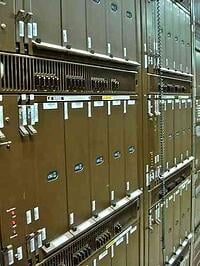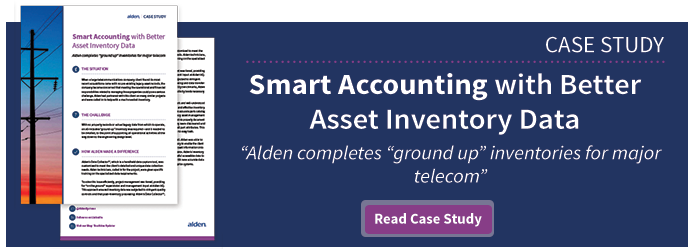Three Ways to Improve Inventory Management
 As summer turns to fall in the U.S., the days get shorter, things needing completion before the holidays get more urgent, and your laundry list for the year may start to look a little daunting compared to the days left to accomplish it. Was a thorough, well-executed asset inventory on your company’s to-do list this year?
As summer turns to fall in the U.S., the days get shorter, things needing completion before the holidays get more urgent, and your laundry list for the year may start to look a little daunting compared to the days left to accomplish it. Was a thorough, well-executed asset inventory on your company’s to-do list this year?
Have you accomplished the task of labeling, scanning, spare-level counting, tallying, and uploading of information to the inventory management software solution of your choice? If so, congratulations! With your min/max levels sorted and your plugs all in a row (if you work in the telecommunications industry, that is), you can pat yourself on the back for taking the right steps toward having orderly assets. If not, you may want to ask: what is holding you back? Check out our archives for several resources to help you get started.
Regardless of whether an asset inventory is in your past or your immediate future, there is always more that can be done, including creating a smoother process, a more accurate count, or a better allocation of resources to get the job done. The list is endless. For this reason, we offer three essential tips toward getting maximum value out of your asset inventory, whenever you choose to do it.
1. Figure out why you need an asset inventory.
An inventory for the sake of inventory is not particularly useful and not likely to be a valuable use of time, resources, or budget. Instead of jumping in without consideration, companies should ask themselves a few questions:
- What is the goal of this inventory?
- What data do we want to capture, and why?
- How will conducting an inventory benefit our business and what pain points or issues will it alleviate?
If after these items are clearly defined it is determined that an inventory would be a beneficial or cost-effective exercise, companies should then choose the data format for the inventory, and plan in detail the inventory process itself, including allocation of the man-and-woman-power needed to get the job done.
2. Monitor transactions as a simple way to track assets.
When a company tracks and records the comings, goings, purchase and decommission or disposal of assets as individual transactions, we say they are maintaining a “perpetual” inventory. This tactic is a good, real-time exercise in figuring out what a company has and needs, in addition to the cost of each asset in possession. Perpetual inventory provides both an audit trail and accurate asset history, which guides decisions from purchasing, to asset use and performance. This can also aid in accounting decisions and reporting, enhancing organizational efficiency. Having a paper trail also makes any additional inventory management that much more accurate and complete, as companies can then compare what is found in inventory to transactional information over time.
3. Realize that not everything has to count.
Not all assets are created equally. Tracking only items critical to maintenance and everyday operation of your business—and that meet the threshold of being financially relevant—makes good organizational sense, especially when time is short or the total list of items to manage is vast. A good piece of advice: Maintaining and tracking an asset must be both prudent and cost effective for your organization. Otherwise, you should not waste time counting and cataloging it. Move on to something with larger organizational impact and value.
